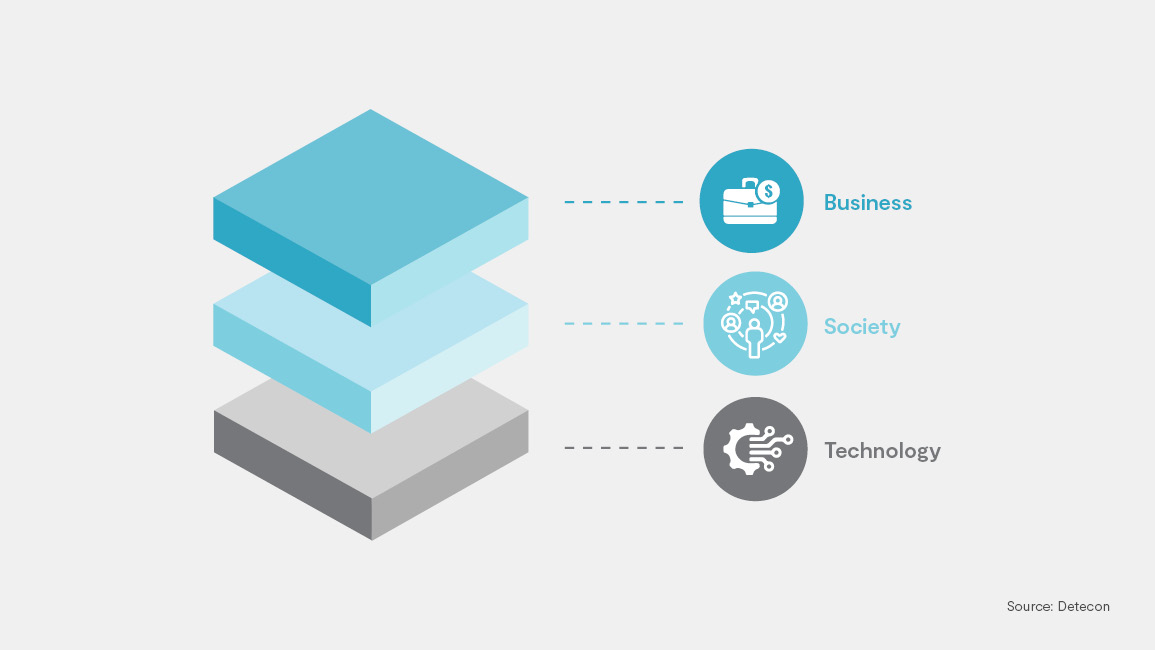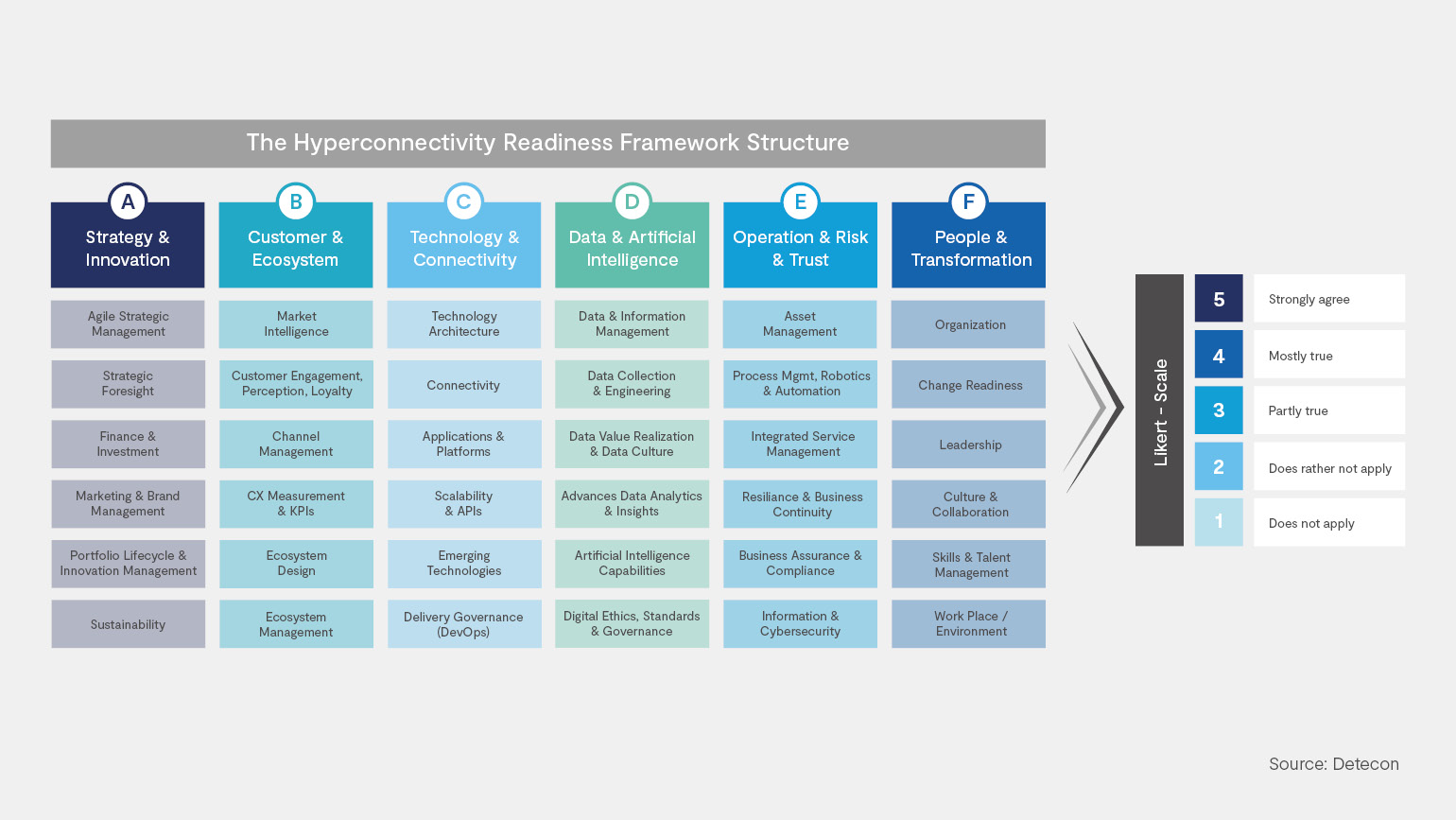One characteristic of digital ecosystems is that technologies and working methods change at an extremely rapid pace. If you want to be successful in these circumstances, effective skills and talent management is essential. In this interview, Anastasia Wallner explains how to ensure that employees have the latest and relevant skills, keep up with the latest developments and maintain their ability to innovate.
Skill Management – what are the requirements for the future?
Successful digital ecosystems need to be highly adaptable to changing customer preferences and market conditions. For example, a customer marketplace could set itself the goal of making the carbon footprint of its products visible to customers. Being able to implement this information in an agile manner for all products and all distribution channels requires close, agile collaboration between different disciplines such as CRM, SCM and sustainability. Effective skills and talent management therefore promotes the formation of interdisciplinary teams that also have a correspondingly broad range of skills.
The digital age generally requires many skills. But what makes the skills requirements for digital ecosystems and hyperconnectivity even more special?
Hyperconnected ecosystems are highly complex. They require a very broad spectrum of team skills in order to be able to follow technological trends such as artificial intelligence and the resulting automation of administrative tasks. So-called "T-shaped digital skills" are becoming increasingly important, i.e. more and more employees should combine skills that are characterized by deep technological expertise within a narrow framework, while other skills are more general, but can be used quite flexibly. In the latter case, employees should have basic knowledge of how they can use more AI and digital-related skills in their work processes. Soft skills are an important key, especially in the changing, diverse scenarios of digital ecosystems.
Do companies generally have a realistic overview of which skills are available and which digital skills are missing?
Most companies have difficulties in gaining a realistic overview. In many cases, they do not have an overview of current skills or do not constantly update relevant databases. There is a lack of strategic personnel and skills planning and it remains unclear how they want to deal with innovation and new technologies. This can be remedied by digitally supported skills models in which all relevant digital core skills are described in various skills levels using clear indicators and mapped to current and sought-after employees.
Companies often shy away from the seemingly costly training of their own employees and try to fill gaps by hiring external staff. In the age of hyper-connectivity, does a company even stand a chance if not enough external employees decide to join the company?
On the one hand, methods such as re-skilling and upskilling are time-consuming. Learning journeys, for example, can be very well tailored to specific needs and companies. When designing them, collegial advice/peer consulting and training academies can be used as an alternative/supplement to going through the HR department.
On the other hand, companies have to deal with the "war for talent" when hiring external employees. Therefore, companies need to find a balance between internal and external hiring to get a fresh, external perspective that can challenge the status quo. Certain expertise can only be found outside the company, and this needs to be passed on through training communities and the widest possible number of formats such as videos, podcasts or shared learning chats.
What are the characteristics of successful incentive systems for attracting or retaining talent?
It is important to look at the incentive system from a cross-generational perspective. Currently, we tend to see one-dimensional systems that are suitable for all generations. With regard to Generation Z, for example, incentives need to take into account the different expectations they have of their employer, e.g. work-life balance, mental health, flexible working hours and more appreciation, which is not just money.
Are there examples of successful skills management programs?
Yes, there are. I can think of three ad hoc.
Deutsche Telekom Skills Up!
Integrated system for strategic personnel planning, job architecture firmly linked to skills management, managers and employees can identify skills gaps and initiate qualification measures, software makes all phases of personnel planning consistent
Uniper – Digital Skills Compass
Dedicated learning journeys for department-specific competence models, individual mix of digital and analog learning formats, learning and exchange in topic-specific communities, defined competence levels and learning journey levels
Telco 2030 Skills
Detecon Skill Repository for Telco 2030 Skills with focus on digital, agile and technical skills:
- E.g.: Automation (Automation Architect, Cloud Automation Engineer, Test Automation Specialist, Robotics Process Automation Developer)
- Artificial Intelligence: (AI Data Analyst, AI Engineer, Data Architect, AI Developer, AI Research Scientist
- Data Analytics: (Data Steward, Business Domain Data Expert, Continuous Intelligence Specialist, Data Ethicist)
It is also important to maintain skills transparency in the company with your own, up-to-date tools. For example, each employee can be responsible for updating their skills in their own profile. Here there are AI-based tools such as Eightfold, which automatically collect skills based on LinkedIn profiles and think even further by giving the person opportunities for upskilling (learning related skills). Basically, only a few companies have complete transparency about the skills of their employees, but this would help to make training more individualized as well as enable better resource planning, who exactly is needed and should be recruited, who can develop internally?
Hyperconnectivity creates connections between people and machines at unprecedented speed. So why is the concept of agile working so crucial for talent retention and corporate culture?
Hyperconnectivity is creating a constantly evolving landscape where market demands change frequently and unpredictably. Agile working enables organizations to adapt quickly to these changes. By promoting flexible structures and fast learning cycles, agile organizations can respond quickly to new trends, customer preferences and technological disruptions.
By breaking down complex projects into smaller, more manageable tasks, agile methods can execute work in shorter cycles, resulting in faster time to market. In addition, regular feedback loops allow for quick adjustments. Agile working also encourages cross-disciplinary collaboration by breaking down silos and enabling different skills to work together. By giving individuals and teams the opportunity to experiment, take calculated risks and learn from mistakes, agile working fosters a culture of continuous improvement and out-of-the-box thinking. This drives innovation and growth, but also increases adaptability and resilience in the face of change and crisis.
What characteristics or rules must an organization have in order to enable efficient skills and talent management in the first place? How can culture promote or hinder positive development?
Corporate culture consists of shared values, beliefs, behaviors and practices that determine how people in an organization interact and work towards their common goals. The following tools in particular can be used to achieve positive changes in culture:
- Commitment and dedication of managers, for example through an open and transparent communication culture, participation in team activities, role models for activities, rewards for innovation activities or social commitment.
- Motivation system, for example through public recognition of performance, career development paths, support for teams and co-determination rights
- Talent development program and development opportunities, for example through individualized development plans, coaching and mentoring, variable learning formats and e-learning
- Active sourcing, cooperation with universities (ambassador programs), foundations, etc. (increases attractiveness also internally)
- High-potential programs
What can data-driven skills management look like, i.e. showing measurement data and analyses of training needs and progress?
Companies are moving away from the traditional view of near/off-shoring towards a rethink that takes into account the impact of AI and automation on the future workforce. Detecon calls this trend AI shoring. AI-supported work (vs. AI-replaced work) will bring about a massive change in jobs in the future.
A recent survey of more than 300 member companies of the DGFP (German Association for Human Resource Management) also shows the increased role of AI:
- over 90% expect new job profiles and job descriptions in the next 3-5 years,
- 21% want to advertise specialized positions with a focus on AI,
- 80% see a need for further training measures in the field of AI,
- 87% see AI as an opportunity to counter the labor shortage.
However, AI poses major data protection challenges, particularly for the HR department. It is therefore advisable to start with a selection of use cases that do not involve sensitive HR data, but do involve a high volume of users as well as high availability and quality of data.
How much time should employees be allowed to spend on digital and analog learning formats? Isn't it the case that intensive skills training often has to take place at the weekend?
Workplace learning is also a good way to improve and acquire new skills, and peer-to-peer learning is the best practice for workplace learning. It is beneficial if additional formal learning takes place. The 70-20-10 rule states that employees learn 70% through on-the-job experience, 20% through interaction with colleagues (informal) and 10% through training.
How can a company determine whether the chosen approach to skills, culture and talent management has been successful? Are there KPIs or indicators?
Important KPIs are: Retention rate, employee satisfaction level. OKRs also play an important role and should be anchored in the organization and linked to objectives.
Further KPIs would be: Use of learning opportunities within the company, rate of course completion, number of "talents" and successfully filled positions within the company (succession planning), fluctuation rate, engagement KPIs, measurement of soft skills in performance discussions by managers, for example.
OKRs are already goals = objectives. It is important that the HR strategy is aligned with the business strategy. OKRs can be used to define and measure individual objectives more explicitly, including in figures.
Last question: How must leadership change in a world of hyperconnectivity?
Hyperconnectivity and digital ecosystems have a huge impact on people and organizations. They require a digital mindset and new skills to effectively harness the potential of this technology. Managers need to be aware of the challenges and opportunities and adapt the way they manage teams and employees. In particular, managing hybrid or decentralized teams requires a different approach to leadership.
Employees are no longer restricted to physical offices or traditional working hours. Selecting from a global talent pool and assembling diverse skill sets in teams is a competitive advantage, but requires decentralized and hybrid leadership. As teams become more distributed, leaders need to rethink how they communicate. There is a need to create a sense of belonging among team members. Communication in digital environments must be effective in order to avoid misunderstandings and promote collaboration. Hyperconnectivity also requires companies to use advanced tools. Platforms, virtual reality and augmented reality are all hugely beneficial to the work of remote and hybrid teams. However, managers must also be made aware of the ethical implications. These include cybersecurity and data protection when using digital tools and data, but the ethics of artificial intelligence, social responsibility and the impact of technology on workplace displacement are also pillars of the new way of thinking.
Excerpt: Hyperconnectivity Readiness Framework
Detecon has developed the Hyperconnectivity Readiness Framework (HCRF), a holistic industry-independent model that enables organizations to navigate the complexities of hyperconnectivity effectively. To achieve this, the model adopts a multidimensional perspective, introducing a sandwich approach within the model, which consists of three interconnected layers: business, society and technology environments.

The structure of the HCRF
The HCRF was designed to provide flexibility in adapting to various environments, contexts and use cases.
At its core, the HC Readiness Framework comprises of six dimensions, which are the fundamental elements of any business, namely “Strategy & Innovation”, “Customer & Ecosystem”, “Technology & Connectivity”, “Data & AI”, “Operations, Risk & Trust”, and “People & Transformation”. The model provides clear definitions for each dimension in the context of hyperconnectivity, establishing a common understanding and effective collaboration between Detecon and its clients.
Diving deeper, the framework further breaks down the six dimensions into 6x6 sub-dimensions, allowing for a more detailed analysis. Each subdimension is linked to concrete improvement methods, tools, and Key Performance Indicators. To measure progress within each subdimension, a Likert scale with five levels, ranging from "does not apply" to "strongly agree," is applied. This scaling method is widely used due to its intuitive interpretation and its ability to ensure accurate and high-quality data collection.








